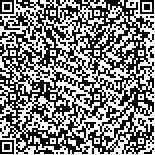杨剑,孟殿怀,邵中洋,程清,王梦婷,殷稚飞.高频经颅磁刺激联合镜像治疗对男性脑卒中患者上肢功能恢复的影响[J].中华物理医学与康复杂志,2018,40(2):91-95
扫码阅读全文

|
| 高频经颅磁刺激联合镜像治疗对男性脑卒中患者上肢功能恢复的影响 |
| High frequency transcranial magnetic stimulation combined with mirror therapy improves upper limb motor function post-stroke |
| |
| DOI: |
| 中文关键词: 重复经颅磁刺激 镜像治疗 脑卒中 运动诱发电位 上肢运动功能 |
| 英文关键词: Transcranial magnetic stimulation Mirror therapy Upper limb motor function Stroke |
| 基金项目: |
|
| 摘要点击次数: 6776 |
| 全文下载次数: 8301 |
| 中文摘要: |
| 目的 探讨10Hz高频重复经颅磁刺激(rTMS)联合镜像治疗(MT)对男性慢性期脑卒中患者上肢功能恢复的影响。 方法 选取45例男性首次脑卒中住院慢性期患者(病程3~6个月),采用随机数字表法将其分为A组、B组及C组,每组15例,在治疗过程中B组有1例患者脱落。3组患者均给予常规药物及康复治疗,A组患者在此基础上给予60min MT治疗;B组患者则先给予患侧M1区高频(10Hz)rTMS治疗,再辅以MT治疗;C组则先进行MT治疗,再给予患侧M1区高频rTMS治疗。以上治疗每天1次,每周治疗5d,共持续治疗4周。于治疗前、治疗4周后分别检测各组患者患侧拇短展肌运动诱发电位(MEP)皮质潜伏期、中枢运动传导时间(CMCT)及上肢运动功能指标,包括上肢Fugl-Meyer评分(FMA)、上肢运动力指数(MI)及偏瘫上肢功能测试-香港版(FTHUE-HK)分级等。 结果 治疗4周后,3组患者MEP皮质潜伏期和CMCT均比治疗前明显缩短(P<0.05),其中B组患者MEP皮质潜伏期较A组明显缩短,CMCT较A组、C组均明显缩短。治疗4周后3组患者上肢FMA、MI评分和FTHUE-HK分级均较治疗前明显改善(P<0.05),其中B组患者上肢FMA评分明显优于A组和C组(P<0.05),FTHUE-HK分级明显优于A组(P<0.05)。 结论 单纯MT或10Hz rTMS联合MT治疗均可改善脑卒中慢性期患者大脑运动皮质兴奋性和上肢运动功能,并以rTMS治疗结束后辅以MT的联合干预方案效果更优。 |
| 英文摘要: |
| Objective To investigate the effect of repetitive transcranial magnetic stimulation (rTMS) combined with the mirror therapy (MT) on the recovery of upper limb function recovery 3 to 6 months after a stroke. Methods Forty-five male patients were randomly assigned to an MT (A) group, an rTMS+MT (B) group or an MT+rTMS group (C ), each of 15. All received conventional medical treatment and stroke rehabilitation. In addition, group A received 60 min of MT daily, 5 days a week for 4 weeks. Group B received 10 min of rTMS over the M1 area of the affected hemisphere followed by 50 min of MT treatment, and group C received 50 min of MT treatment followed by 10 min of rTMS. rTMS was delivered at a frequency of 10 Hz and an intensity of 90% resting motor threshold. The latency of motor evoked potential (MEP) for the affected abductor pollicis brevis muscle and its central motor conduction time (CMCT) were observed before and after the treatment. The upper extremity portion of the Fugl-Meyer assessment (FMA) was performed along with a functional test for the hemiplegic upper extremity (FTHUE). The motricity index (MI) was also quantified. Results Average MEP latency and CMCT had decreased significantly in all three groups after the treatments. The average MEP latency of group B was significantly shorter than that of group A, and CMCT was also significantly shorter than for groups A and C. Moreover, after the intervention, all of the groups had significantly improved their average FMA, MI and FTHUE scores, with the average FMA score of group B significantly better than those of groups A and C. The average FTHUE score of group B was also significantly better than that of group A. Conclusions MT either alone or in combination with rTMS can improve cerebral motor cortex excitability and motor recovery after a stroke. Ten minute rTMS sessions followed by 50 min of MT have the best effect. |
|
查看全文
查看/发表评论 下载PDF阅读器 |
| 关闭 |